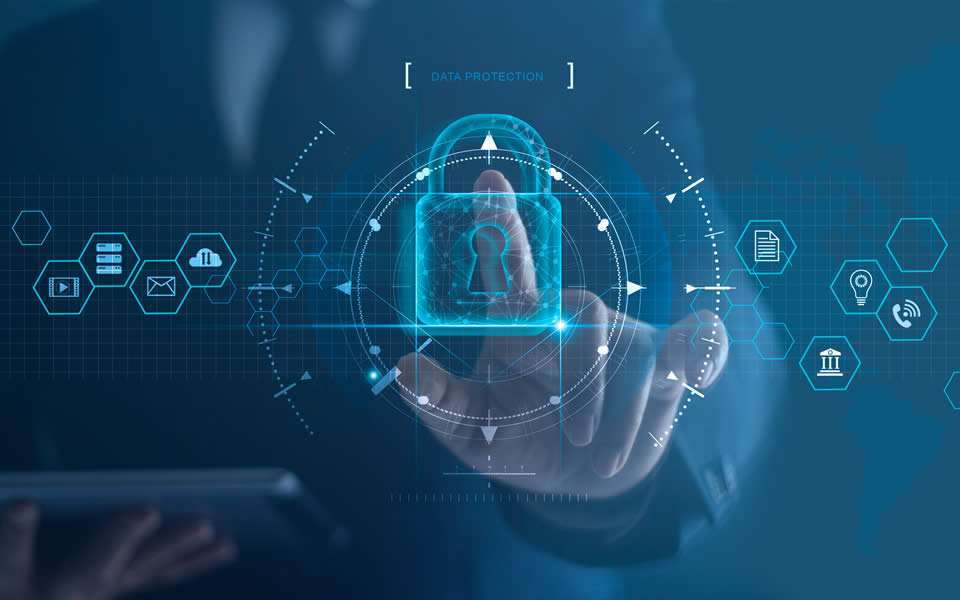Maximizing Identity and Access Management: Marcum Technology’s Blueprint for Security
By Wesam Hasan, Director, Cloud & Infrastructure Services
The need for robust cybersecurity measures has never been greater. As technological advancements continue to surge, the complexity and frequency of cyber threats amplify, demanding proactive security measures to shield organizations from potential risks and breaches.
It is essential to implement secure authentication measures to protect sensitive data from unauthorized access. Unauthorized access to sensitive data can lead to financial losses, legal consequences, and damage to an organization’s reputation.
Marcum Technology is shedding light on the underutilization of Identity and Access Management (IAM) in organizations. The insights into IAM and how it should be strategically implemented serve as a blueprint for clients looking to build a solid security model.
UNDERSTANDING IDENTITY AND ACCESS MANAGEMENT
Identity and Access Management (IAM) is the linchpin in safeguarding digital resources and preserving sensitive data in modern organizations. IAM’s primary objective is to ensure that only authorized individuals gain access to specific systems and data, effectively mitigating the risk of unauthorized access and potential security breaches.
IAM is a multi-faceted system, comprising authentication, authorization, and identity verification. Authentication serves as the initial checkpoint, validating user identities. Authorization determines accessible resources, while identity verification ensures the authenticity of the accessing individual, collectively establishing stringent access control measures to enforce policies and safeguard sensitive information. These components work together to establish secure access control measures, allowing organizations to enforce policies and protect sensitive information.
Within the realm of IAM, several pivotal solutions are deployed, including Identity Providers (IdP), Single Sign-On (SSO), Multi-Factor Authentication (MFA), Password-less authentication, and Zero Trust Access (ZTA). IdP manages user identities and authentication, SSO streamlines access across multiple systems with a single set of credentials, MFA fortifies security through layered verification, and Password-less authentication eliminates the need for passwords, eradicating the risk of credential theft and unauthorized access. Zero Trust Access further augments security by challenging the traditional perimeter-based security paradigm, emphasizing continuous verification of users and devices attempting to access organizational resources, regardless of their location or network perimeter status.
To accomplish this, organizations employ User and Entity Behavior Analysis (UEBA), leveraging sophisticated Machine Learning (ML) algorithms integrated within Security Information and Event Management (SIEM) tools to continuously monitor, analyze, and adapt to evolving user behaviors and potential threats across the IAM landscape.
IAM, essential for securing digital resources and sensitive data by controlling access, hinges on incorporating robust Policies and Identity (ID) Governance within the overarching security policy, ensuring consistent enforcement of access controls, identity management standards, and regulatory compliance to safeguard critical assets and mitigate vulnerabilities.
CREATING A SECURE IDENTITY AND ACCESS MANAGEMENT STRATEGY
Formulating a robust IAM process necessitates critical steps to shield sensitive data effectively. Implementing multi-factor authentication, requiring users to present multiple verifications (e.g., passwords and unique mobile codes), bolsters security layers, erecting formidable barriers against unauthorized access.
Additionally, encryption plays a pivotal role in securing user data by transforming it into an inaccessible code without encryption keys. Moreover, enforcing stringent password policies, such as setting minimum length and complexity requirements, serves as a potent deterrent against unauthorized access, augmenting the security posture.
Furthermore, integrating Identity Governance practices, including the establishment of comprehensive policies governing user lifecycle workflows for seamless onboarding and secure offboarding, is imperative in fortifying the IAM strategy, ensuring consistent compliance and controlled access throughout user engagements.
ADVANTAGES OF AN EFFECTIVE AUTHENTICATION PROCESS
Embracing an authentication process yields myriad benefits. The implementation of heightened security layers significantly minimizes unauthorized access, fortifying sensitive information against potential breaches and fraudulent activities. This strict access control significantly diminishes the likelihood of unauthorized individuals infiltrating the system, preserving data integrity.
Authentication processes contribute greatly to fraud prevention, as it ensures user identities undergo stringent verification before granting access. This not only enhances security but also builds trust among stakeholders and customers, assuring them of secure and authorized access to information.
MUST HAVES FOR SECURING DIGITAL RESOURCES PRIORITIZING PRIVILEGED ACCESS MANAGEMENT (PAM)
Privileged Access Management (PAM) emerges as a crucial cog in safeguarding an organization’s critical assets. Strictly controlling access to specific domains, especially high-level administrative accounts, ensures heightened security measures and reduces vulnerabilities. Implementing robust PAM solutions can effectively manage admin accounts, providing secure password generation and dynamic access.
ZERO TRUST ACCESS (ZTA)
Zero Trust Access dismantles traditional perimeter-based models. It emphasizes continuous verification, scrutinizing access requests irrespective of origin or user location. Adopting this model minimizes attack surfaces, fortifies defenses against sophisticated threats, and establishes a security infrastructure based on stringent access controls and continuous authentication.
ENSURING COMPLIANCE AND STAYING UPDATED
Organizations often grapple with compliance issues and evolving cyber threats. Marcum Technology’s pivotal role involves aiding clients in adhering to regulatory standards and staying ahead of the dynamic cybersecurity landscape. Continuous education, strategic partnerships, and collaboration with industry leaders enable Marcum Technology to adapt and learn, ensuring clients’ compliance and fortification against evolving threats.
RISK ASSESSMENT: UNDERSTANDING ORGANIZATIONAL NEEDS
A crucial step in fortifying an organization’s security is having a dedicated role for risk assessment. This individual identifies and prioritizes protection needs, devising strategies for risk mitigation. Once risks are identified, Marcum provides support to implement effective security measures, mitigating potential vulnerabilities.
BALANCING SECURITY AND USER EXPERIENCE
Often overlooked soft costs in security underscore the importance of balancing security measures with user experience. Striking the right equilibrium between productivity and security implementations is imperative. Effective administration and user engagement strategies form the bedrock of this equilibrium.
STAYING AHEAD: EVOLUTION OF AUTHENTICATION TECHNOLOGIES
Authentication technologies continue to evolve, transcending conventional methods. Innovations such as biometrics, tokens, and passwordless authentication mark transformative trends, augmenting authentication processes and mitigating password-related vulnerabilities. Passwordless authentication, particularly, revolutionizes security protocols, enhancing authentication processes and curbing credential theft risks.
MARCUM TECHNOLOGY CAN HELP FORTIFY YOUR DATA ENVIRONMENT
Chief Information Security Officers (CISOs) and IT Managers need to stay abreast of cutting-edge IAM security solutions. Marcum Technology’s objective is to guide these leaders in effectively implementing IAM strategies, empowering them to fortify their organization’s security posture and ensure seamless data access control. We help clients by ensuring compliance with regulatory requirements, identifying gaps in current authentication and access management solutions, and conducting assessments to propose tailored tools, processes, and systems.
Whether it’s advising on or implementing multi-factor, biometric, or token-based authentication, Marcum Technology has the tools and solutions to address various authentication challenges. Through continuous education, training, and collaboration with vendor partners and customers, we adapt to support your security needs.
Let us help your organization enhance the security and integrity of your data environment, allowing for better decision-making and peace of mind, knowing that your information is accurate and protected from threats.

















